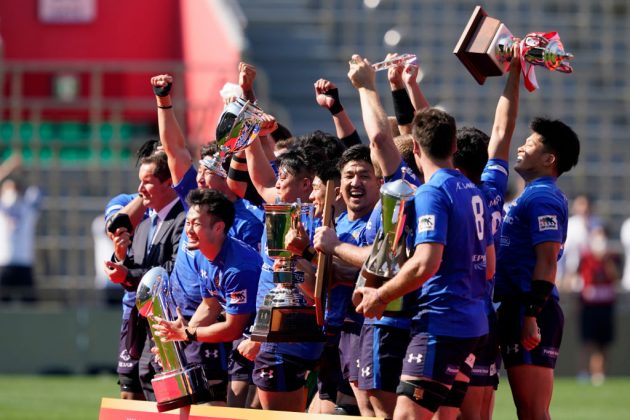There has been a mixed reaction to details of the new pro league in Japan. Rich Freeman reports
Japan Rugby League One Lowdown
The Japan Rugby Football Union’s announcement last week of the name and make-up of its new professional league – Japan Rugby League One – did little to quell the anger, disbelief and cynicism that has been building among many fans in the Land of the Rising Sun.
The name of the league, the way the teams were positioned in the three divisions, the format of the first division, the lack of consistency with team names and the internal politics that have resulted in a merry-go-round of key personnel were all the subject of numerous posts on social media from fans whose patience has worn thin.
The league is supposed to see the sport become truly professional at the highest level with a great deal of emphasis placed on business models, aligning teams to regions and developing talent through academies.
Japan's new domestic league has landed! ✨
Japan Rugby League One ?#LeagueOne #JapanRugby pic.twitter.com/OjNdxui9nT
— Japan Rugby (@JRFURugby) July 18, 2021
But it is a direction a number of teams seem to have opposed from the very beginning when the original plan was for 12 franchises based in the 12 Rugby World Cup 2019 venues.
That plan soon changed, according to one source, to a small high-performance tournament to run alongside the semi-professional Top League, before the JRFU announced that 25 teams from the Top League and Top Challenge League (the old second division) would make up the new league.
One reason for this was the compromise that while the top end of the new league is set to be fully professional, the lower divisions would allow teams to follow models similar to now, with players remaining company employees rather than full-time rugby players.
However, the 25 soon became 24 when Coca-Cola Red Sparks decided in April that they had had enough of rugby altogether and disbanded their team.

Munakata Sanix Blues, meanwhile, jettisoned most of their foreign-born players and coaches and have subsequently been placed in the new third division as they look to remain more amateur than professional.
Sources say a number of the powerhouse corporate sides remained unhappy with the way things were being done right up to last week’s announcement, which came a month later than originally planned and two days after the JRFU admitted they had changed some of the judging criteria for the new league, though they refused to say quite how it affected matters.
The result is that some teams refused to drop their company names, others added a very general regional name – there are three teams that include Tokyo as part of their name and two with Tokyo Bay – and there are vast areas of Japan with no representation whatsoever.
In a rare move, Toyota Shokki Shuttles – who were placed in the third division despite winning the Top Challenge League this year – put out a statement expressing their displeasure at how things were done but vowed to do the rest of their talking on the field.
There was, however, plenty of talk online.
“We are happy that the Japan Rugby Union wants to make their game more like rugby league,” said an official of the Japan Rugby League Samurai Supporters Club, regarding the new name.
Even one of Japan’s most famous fans got in on the act.
Japan Rugby League One “sounds like the third division of football. I honestly cannot find why the name ‘Top League’ needs to be discarded,” tweeted Hiroshi Moriyama, better known as Bak-san who grabbed worldwide attention during RWC 2019 for his painted jerseys.

Hiroshi Moriyama in a body-paint shirt at RWC 2019 (AFP/Getty Images)
The JRFU had said the new league would provide an easy-to-understand format, but the first division is anything but.
The top 12 sides will be split into two groups of six and play two games against each of the five other teams in their group. They will also play one game against each team from the other group.
But rather than play-offs to decide the league champion, overall points will be used, despite some teams potentially playing the best teams fewer times than others and the worst teams more times than others.
The rules on the number of foreign players teams can field are also still to be clarified.
The good news is that there is promotion and relegation between the divisions, the top two teams are set to play in some form of post-season international club competition and many of the sides have already started academies to develop young players.
But there is still much to be done if Japan is to truly make the most of their hosting of the 2019 World Cup.
Can’t get to the shops? You can download the digital edition of Rugby World straight to your tablet or subscribe to the print edition to get the magazine delivered to your door.
Follow Rugby World on Facebook, Instagram and Twitter.





